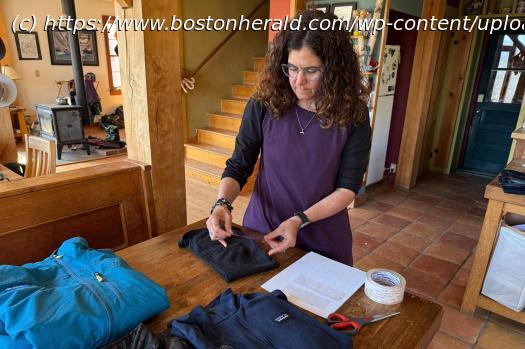Most of the clothing you wear or own shed plastic fiber fragments that get out into the environment. This Earth Day, learn about ways to reduce their impact on the planet.
Bottles and bags, food wrappers and straws. Piping, packaging, toys and trays. Plastic is everywhere — and yet some people may be surprised at how much they actually wear.
A typical closet is loaded with plastic, woven into polyester activewear, acrylic sweaters, nylon swimsuits and stretchy socks — and it’s shedding into the environment nonstop.
When garments are worn, washed and put through the dryer, they shed plastic fiber fragments. A single load of laundry can release millions that are so tiny wastewater treatment plants can’t capture them all. They wind up in local waterways that connect to the ocean. Marine animals eat them, and that can pass plastic to larger animals and humans.
Even natural fabrics shed fibers and have chemicals that can leach into the environment. But polyester is the most widely used fiber on Earth, and along with other synthetic fibers accounts for about two-thirds of production worldwide.
Tuesday is Earth Day, when people worldwide contemplate ways to reduce their impact on the planet.
“Everyone who wears and launders clothing is part of this problem but everyone who wears and launders clothing can be part of the solutions,” said Rachael Z. Miller, founder of Vermont-based Rozalia Project for a Clean Ocean.
Simple changes like washing clothes less and using cold water instead of hot can help reduce the shedding of fibers. More challenging is that textiles need to be produced and used in a more sustainable way, said Elisa Tonda at the UN Environment Programme. For example, designing clothes that shed fewer microfibers and are high-quality to last longer, said Tonda, who leads the resources and markets branch.What to do? Start by changing habits
The easiest solution is to wash clothes less often, making for less of the friction that breaks fibers apart, said Anja Brandon, director of plastics policy at Ocean Conservancy.
“They get tumbled and tossed around with a bunch of soaps, really designed to shake things up to get out dirt and stains,” Brandon said.
Start
United States
USA — mix Your clothes are shedding bits of plastic. Here’s what people are doing...






